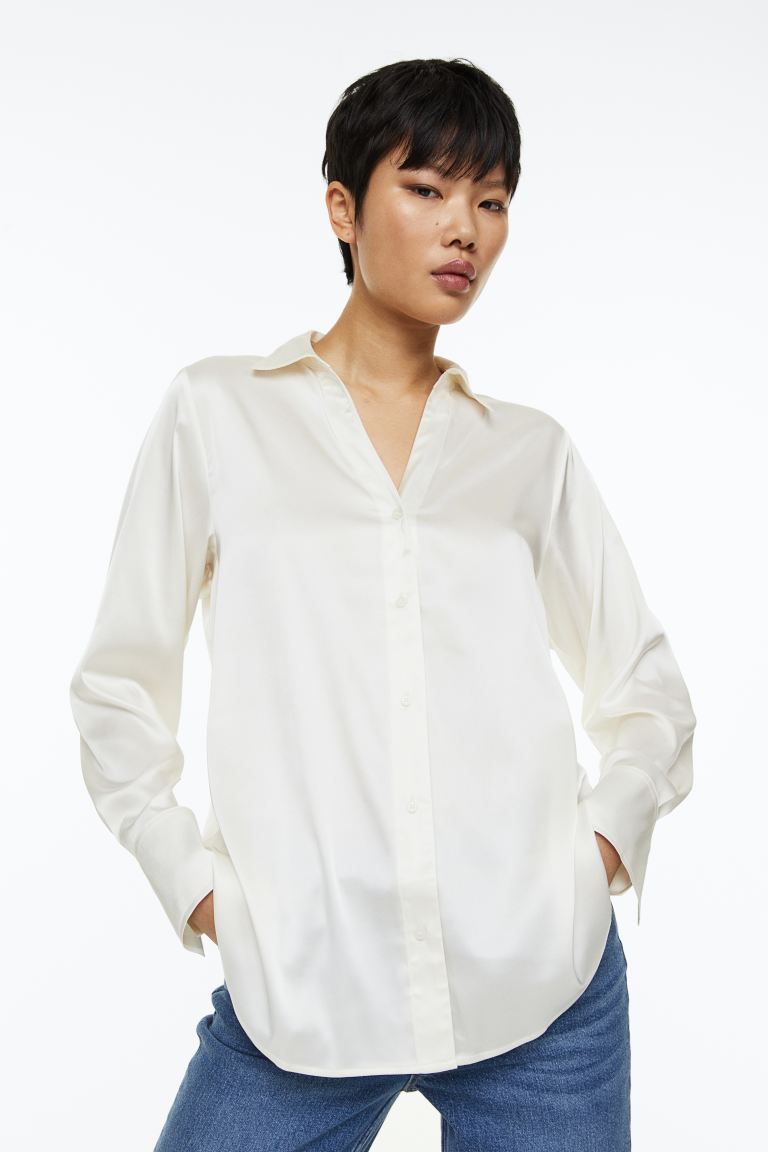Everyone on TikTok Is Talking About the Old Money Aesthetic—Here's What It Means
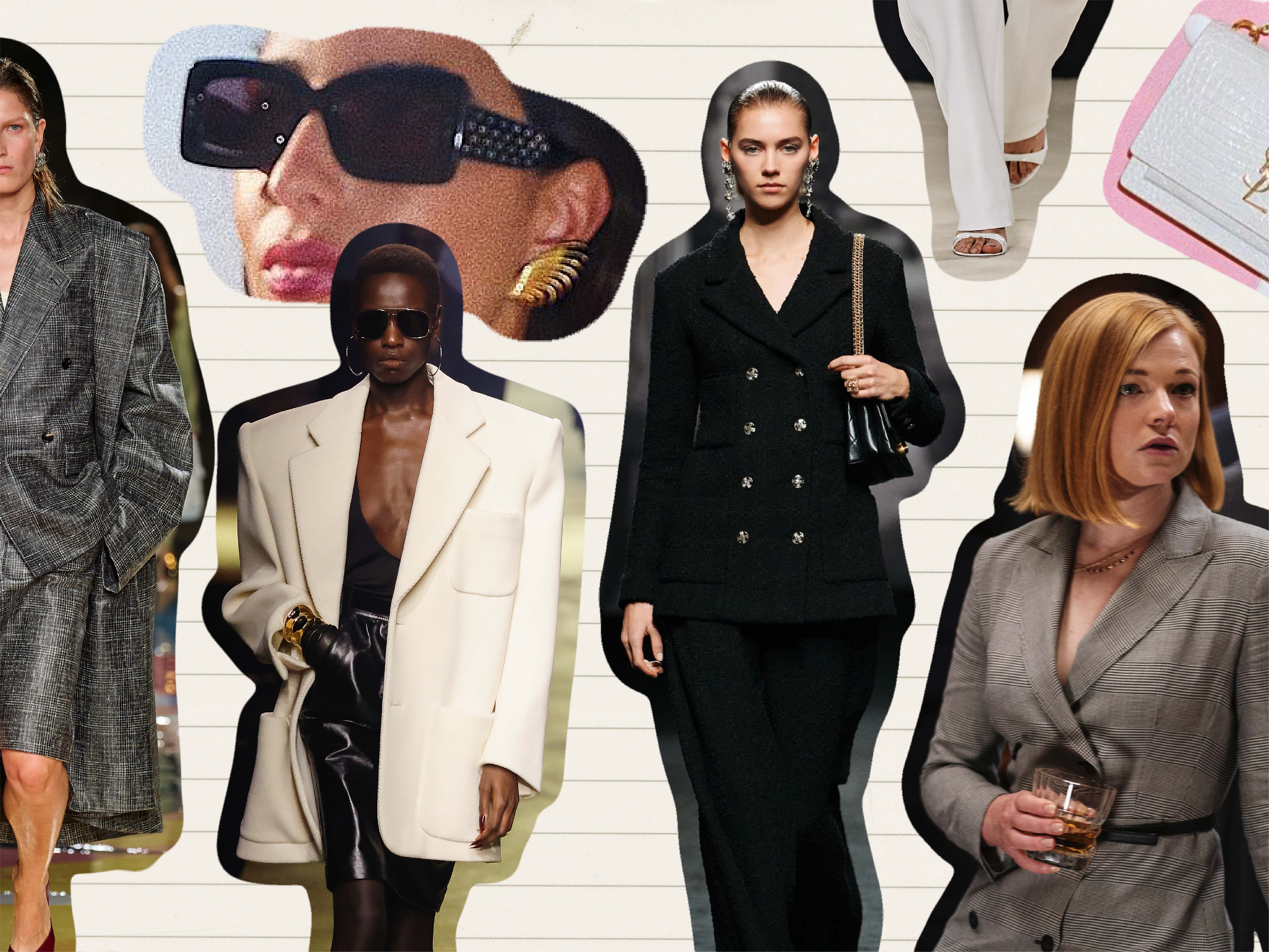
Photo:
Courtesy of Bottega Veneta; @bettinalooney; Courtesy of Saint Laurent; Courtesy of Chanel; David Russell/HBO; Courtesy of FerragamoRaise your hand if you've ever cringed looking at your weekly screen time report. (Don't worry—mine is abysmal too.) While there's no arguing that many of us would benefit from going out to "touch grass" more, occasionally, there's something to gain from spending copious hours online—e.g., knowledge about global events, community building, and even a few cute outfit ideas. But possibly one of the best things about social media is that it allows us not only to create and follow but to also contemplate.
On a larger scale, these platforms have played a pivotal role in giving marginalized communities the avenue to speak up and question society's power structures. And on a personal level, they've changed how we relate to every aspect of our lives, including clothing. When a fashion trend takes off on TikTok, it may seem trite, but it's actually saying way more about society than we think. A prime example of this is the recent rise of the old money fashion aesthetic.
Across Twitter, TikTok, Instagram, and various media publications (including our very own), we've seen an amalgamation of coverage centered around phrases like "quiet luxury," "stealth wealth," and "old money dressing." While the terms may differ, make no mistake—this idea is centered on discerning how wealth is displayed through clothing. It's a concept that has invoked strong emotions of contempt and approval.
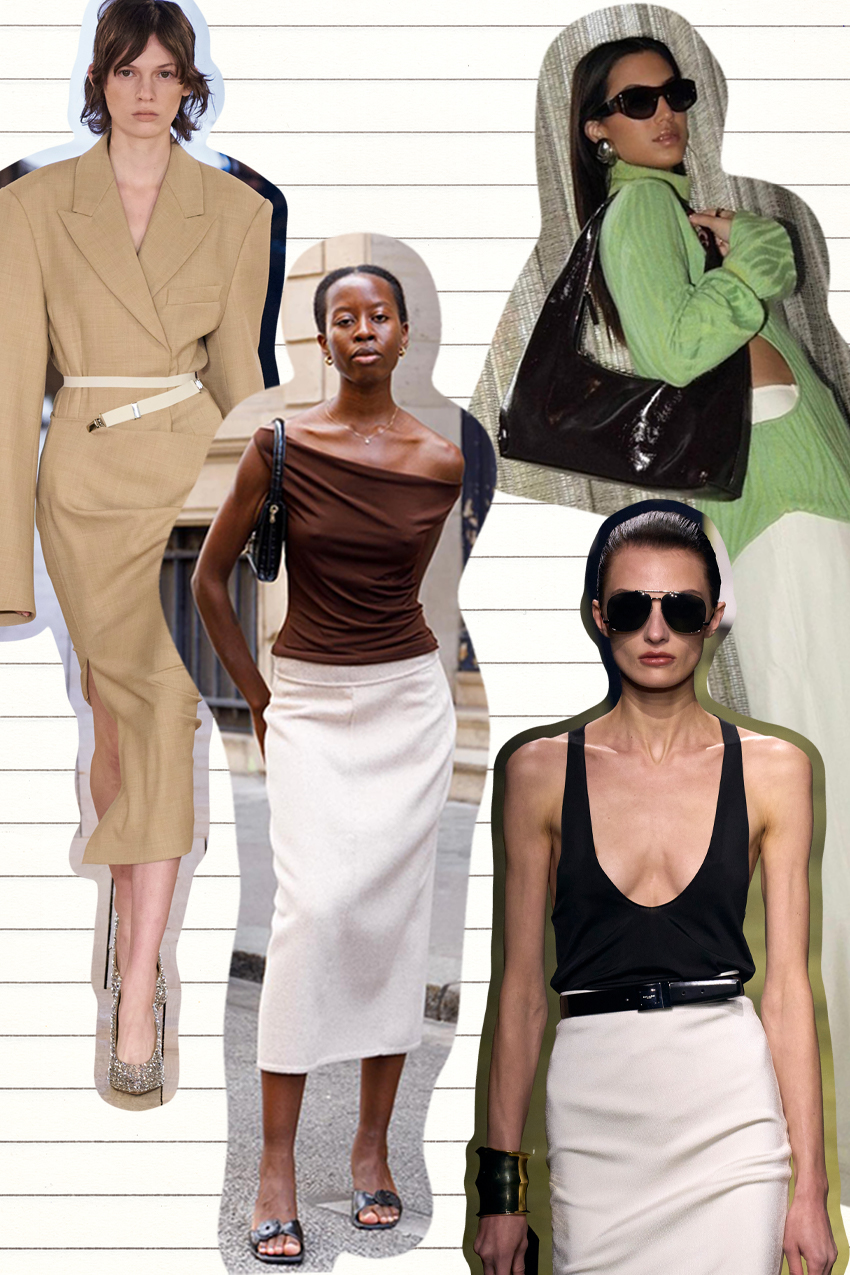
Photo:
LaunchmetricsSpotlight/Sportmax; @sylviemus_; @taniasarin; Launchmetrics Spotlight/Saint LaurenMy sneaking suspicion is that part of the divide around this fashion aesthetic has little to do with the actual clothing and everything to do with broader cultural issues tied up with it. We're in an age when we feel social pressure to get our hands on the buzziest items because we saw them on social media, and that desire flies in the face of an ever-widening wealth gap, record-breaking inflation, and stagnant wages. It's what's arguably led to the boom in fast fashion. (Though, that's an essay for a different day.) Basically, there's so much that could influence how people feel about this fashion aesthetic.
Nevertheless, I was still interested in getting to the root of the subconscious appeal of this phenomenon, so I spoke with fashion psychologist and Afterpay brand ambassador Shakaila Forbes-Bell. Ahead, you'll hear from her about how fashion trends have always reflected cultural sentiments, what she feels the allure of quiet luxury is really about, and the six key staples you'll need to embody old money energy. Therapy is in session…
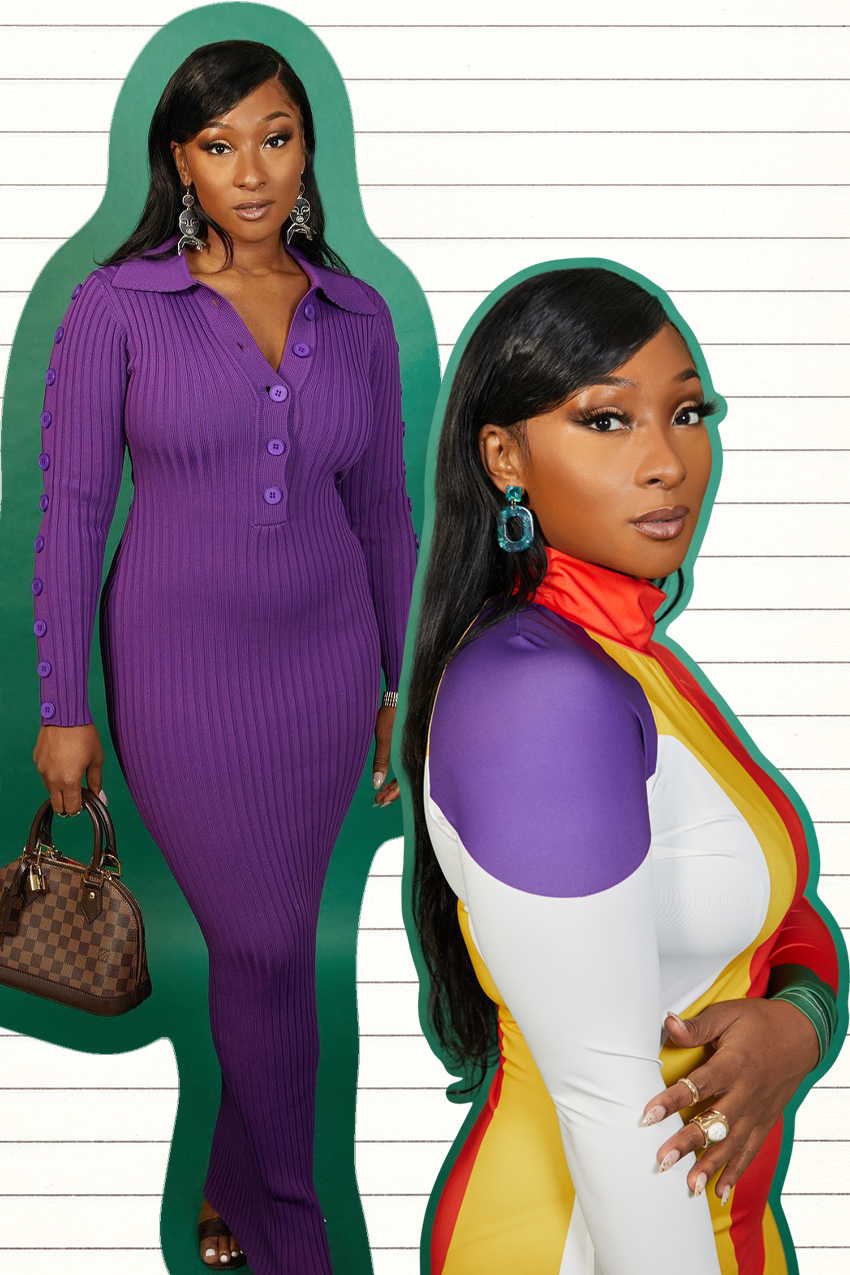
Photo:
JKG PhotographyFor those who aren't familiar with your work, what do you do?
I'm a fashion psychologist, consultant, and TV commentator. I'm also the founder of Fashion Is Psychology and the author of the best-selling book Big Dress Energy. In 2016, I became the first Black person in the world to earn a postgraduate degree in the emerging field of fashion psychology. My thesis investigating racial representation's impact on consumer behavior in fashion media was published in the International Journal of Market Research. Throughout my career, I have worked with global fashion brands, including Depop, Maybelline, Next, eBay, and Stitch Fix, and I am the current in-house fashion psychologist for Afterpay.

Photo:
@emmanuellek_; @cassdimicco; @lefevrediary; @annarvitielloOften, people assume fashion is frivolous, but many experts, like yourself, would disagree. What do you think most people get wrong about style's pivotal part in our personal lives and wider pop culture?
Many people only see fashion for its functional or aesthetic purposes. Psychological insights teach us that clothes impact our lives on several levels, including how others perceive us and how we see ourselves. Clothes impact our relationship with our bodies. They can be political and nostalgic, impact our mood, and influence our thoughts and actions. In pop culture, clothes are incredibly symbolic, defining eras and movements and flooding us with nostalgia when we embrace these looks down the line. By engaging in the simple act of getting dressed every day, you have become an active participant in the process of fashion and all of the deeper meanings that come with it.
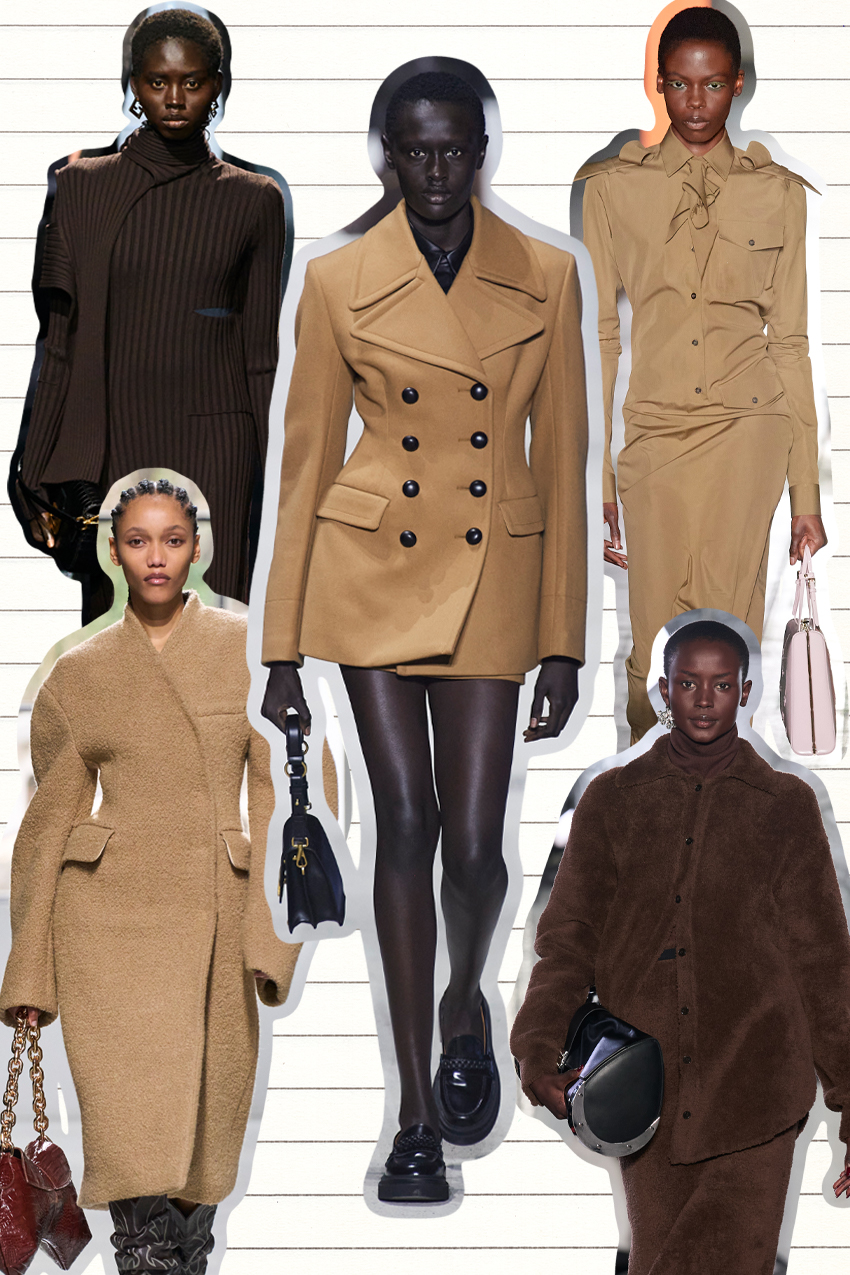
Photo:
Launchmetrics Spotlight/Fendi; Launchmetrics Spotlight/Tod's; Launchmetrics Spotlight/Prada; Courtesy of Brandon Maxwell; Launchmetrics Spotlight/A.W.A.K.E. ModeAs a fashion psychologist, what role do you think buzzy trends and fashion aesthetics play in reflecting the wider mental state of society? Are there any specific trends that you think are prime examples of how fashion reflects the wider mental state of society?
Now more than ever, fashion trends reflect the feelings and moods of society due to fashion becoming more "trickle up" and "trickle across," where everyday people are utilizing their cultures, unique experiences, and lifestyles to influence how we style and shop. For example, Afterpay's 2021 trend report revealed a rise in the popularity of ready-to-wear outfits in various shades of nude, from brown to chocolate to beige to ivory. A few years earlier, nude had been confined to one shade, excluding those from ethnic minority backgrounds. This shift came off the heels of the second wave of the Black Lives Matter movement, where demands for increased diversity and inclusion and improvement in the lives of minorities spread beyond the boundaries of the political sphere and permeated all parts of our lives, including fashion.
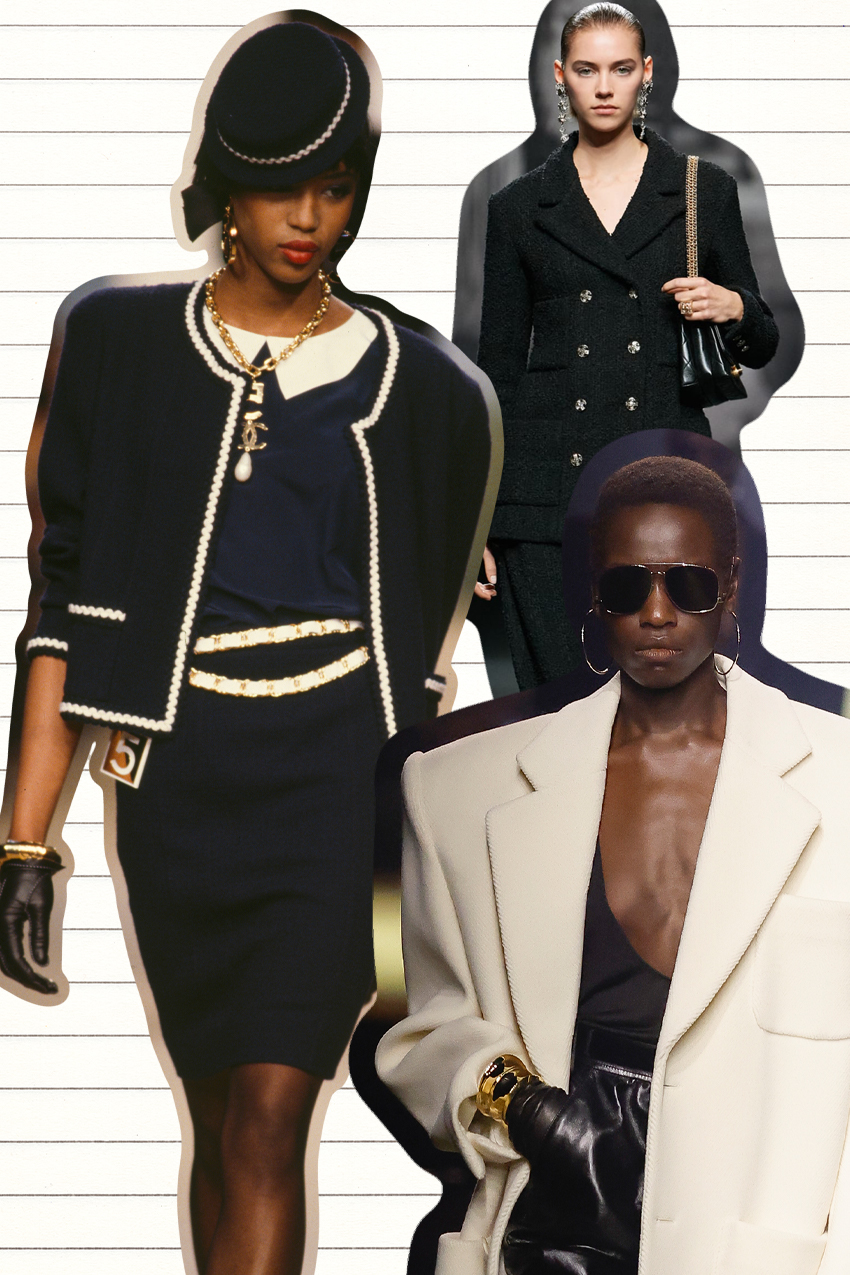
Photo:
Daniel SIMON/Gamma-Rapho via Getty Images; Courtesy of Chanel; Courtesy of Saint LaurentIn terms of more specific fashion aesthetics that have taken off recently, we've seen this idea of "old money" dressing pick up a lot of traction. How would you define this aesthetic? Why do you think it's blown up in the past few months?
The old money aesthetic can be described as dressing in a way to give the appearance that you've inherited large sums of money rather than worked for it. The trend seems to have grown in tandem with the popularity of shows like Succession, and due to the chameleon effect, we naturally desire to emulate those we admire on-screen. It's also worth noting that, throughout history, ideas around what wealth looks like have evolved in tandem with pop culture, political movements, and runway presentations.

Photo:
@xbibigul; @sallyomo; @indyabrownOn a deeper psychological level, would you say that the allure of "quiet luxury" directly responds to the larger financial inequities that many younger generations face? What do you think the psychological appeal of looking "rich" really says about where we're at right now?
Many would find it strange that this aesthetic is gaining popularity during widespread economic uncertainty. Still, studies have shown that people living in places with the most income inequality have higher online searches for luxury products. People may use this trend to provide a sense of esteem, validation, and inclusion when entry to higher socioeconomic classes is more unlikely than ever. Moreover, studies have linked interest in quiet luxury to those with a value-adjustive attitude. Unlike those with a social-adjustive attitude—people who adjust their behavior, including their style, to see acceptance by a peer group—value-adjustive people care less about the opinion of others. They focus more on hedonism and being their most unique self, so they will prefer old money aesthetics or quiet-luxury goods that are not popular and helps to showcase their individual beliefs, attitudes, and tastes.

Photo:
Tim Graham Photo Library via Getty Images; David Russell/HBO; NBC/Alamy; Warner Bros/ AlamyAre there any style icons (fictional or otherwise) that you feel embody the old money aesthetic? If so, why?
I would have to say Princess Diana just because her looks were always very effortless and simple but most definitely came at a high price. Of course, we have fictional characters like Shiv Roy from Succession that continue to be a relevant figment of the cultural imagination.
Are there any key pieces that you feel define this aesthetic?
Based on Afterpay data, there are a few items we see converting high sales and feel more aligned with this aesthetic.
1. Subversive Basics

Photo:
Launchmetrics Spotlight/ Lanvin; Courtesy of Bottega Veneta; Courtesy of Tove; Courtesy of Nanushka; Launchmetrics Spotlight/ Versace; Courtesy of The RowCollectively speaking, we have this built-in idea that looking "wealthy" means donning items plastered in logos or vibrantly hued tweed sets. But since last fall, we've seen designers subvert this trope and, in its wake, embrace what's been dubbed "quiet luxury." It's less about peacocking and instead opting for well-made staples with subtle twists that make them feel luxurious.
2. Tailored Trousers

Photo:
Courtesy of Jason Wu; Courtesy of Ferragamo; Courtesy of Bottega VenetaBesides basics with bold touches, tailored trousers are another key item pivotal for creating a luxurious-looking wardrobe. Afterpay data revealed a 23% YOY increase in sales of tailored trousers for a good reason. No matter how much you spend them or how you style them, you can rest assured that a well-fitted pair of pants can make you look like you've gone up a tax bracket.
3. Ballet Flats

Photo:
Launchmetrics Spotlight/ Miu Miu; Launchmetrics Spotlight/ Tod's; Launchmetrics Spotlight/ AmiAnother item that's an essential part of this aesthetic is ballet flats. Various luxury brands have embraced this footwear over the past few seasons—from Miu Miu's F/W 22 collection to Ami's F/W 23 show. It's not just luxury labels that have taken to ballet flats. According to Afterpay data, we've seen a 15% YOY increase in sales.
4. Trench Coats

Photo:
Launchmetrics Spotlight/ Ferragamo; Launchmetrics Spotlight/ Tory Burch; Launchmetrics Spotlight/ Alexander McQueenOne of the easiest ways to give off "rich and unbothered" energy well into the fall is by investing in great outerwear. Afterpay data has already revealed a 29% YOY increase in sales of one specific type of outerwear: trench coats. While this coat never goes out of style, should you want it to feel more elevated, opt for an iteration with luxurious details—dramatic collars, unexpected colorways, sumptuous fabrics, and reworked silhouettes.
5. Long-Haulers

Photo:
Launchmetrics Spotlight/ Miu Miu; Launchmetrics Spotlight/ Ferragamo; Courtesy of Victoria Beckham; Launchmetrics Spotlight/ Loewe; Courtesy of Peter DoIn the fictional world of Succession, an oversize tote may be considered "capricious," but in the real world, they're anything but that. Across spring/summer 2023 and fall/winter 2023 collections, we saw designers embrace larger bag shapes and give them a stylish spin. There were oversize carryalls, supersized clutches, and gigantic handbags, all made from luxe materials. And the relevance of big bags isn't just limited to the film and fashion industries. According to Afterpay's data, there's been a +162% YoY increase in purchases of larger purses.
6. White Sneakers

Photo:
@_livmadeline; @oliviafaehYou don't have to be a sneakerhead to know that collecting can be a costly endeavor. But if you're trying to get the "old money" aesthetic on a budget, there is a straightforward solution: white sneakers. Without a doubt, they're an essential part of this trend—we see them worn by celebs, entrepreneurs, and the fashion set. But the great thing about these shoes? Anyone can shop for them. Just over the past year, Afterpay has seen a 2% increase in sales of white sneakers, proving that you don't have to be rolling in the funds to have that "drip."

Photo:
Courtesy of Khaite; Launchmetrics Spotlight/ Lanvin; Launchmetrics Spotlight/ Proenza Schouler; Courtesy of Saint Laurent; Launchmetrics Spotlight/ Bottega VenetaFinally, as someone well-versed in the psychological impacts of clothing on our lives, what parting advice would you give our readers? How can someone balance the desire to be a part of cultural trends and meet one's own personal needs?
Firstly, I've noticed that some people resent being interested in style trends or resenting those that do. As humans, we are social creatures, and our desire to belong means that we will always be swayed by things that help us to be part of the current cultural zeitgeist. The key is to ensure that whatever you're buying is the right fit for you and that you won't regret the purchase. The best way to do that is to embrace my four, three, two, one rules, which are as follows:
Before you buy something, ask yourself, Will you still wear it in four years? Mindless shopping purchases often tend to be fad items with no personal longevity because you don't truly envision yourself owning this item for the long-term. Avoid this wastefulness by picturing your future self in the outfit beyond that one social media post. If that image doesn't look right, walk away.

Photo:
Launchmetrics Spotlight/The Garment; Launchmetrics Spotlight/Versace; Launchmetrics Spotlight/Tory Burch; @annelauremais; @borislavasekovaIf you can envision yourself wearing the thing you plan on buying on at least three different occasions or with three different outfits, that's a surefire way to tell if it has longevity.
When we're shopping, we get a rush of adrenaline and dopamine that can flood the dorsolateral prefrontal cortex, the part of our brain that helps us make sound decisions. So take two deep breaths to calm your nervous system down and make sure external stimuli are not swaying you but by your own desires and needs.
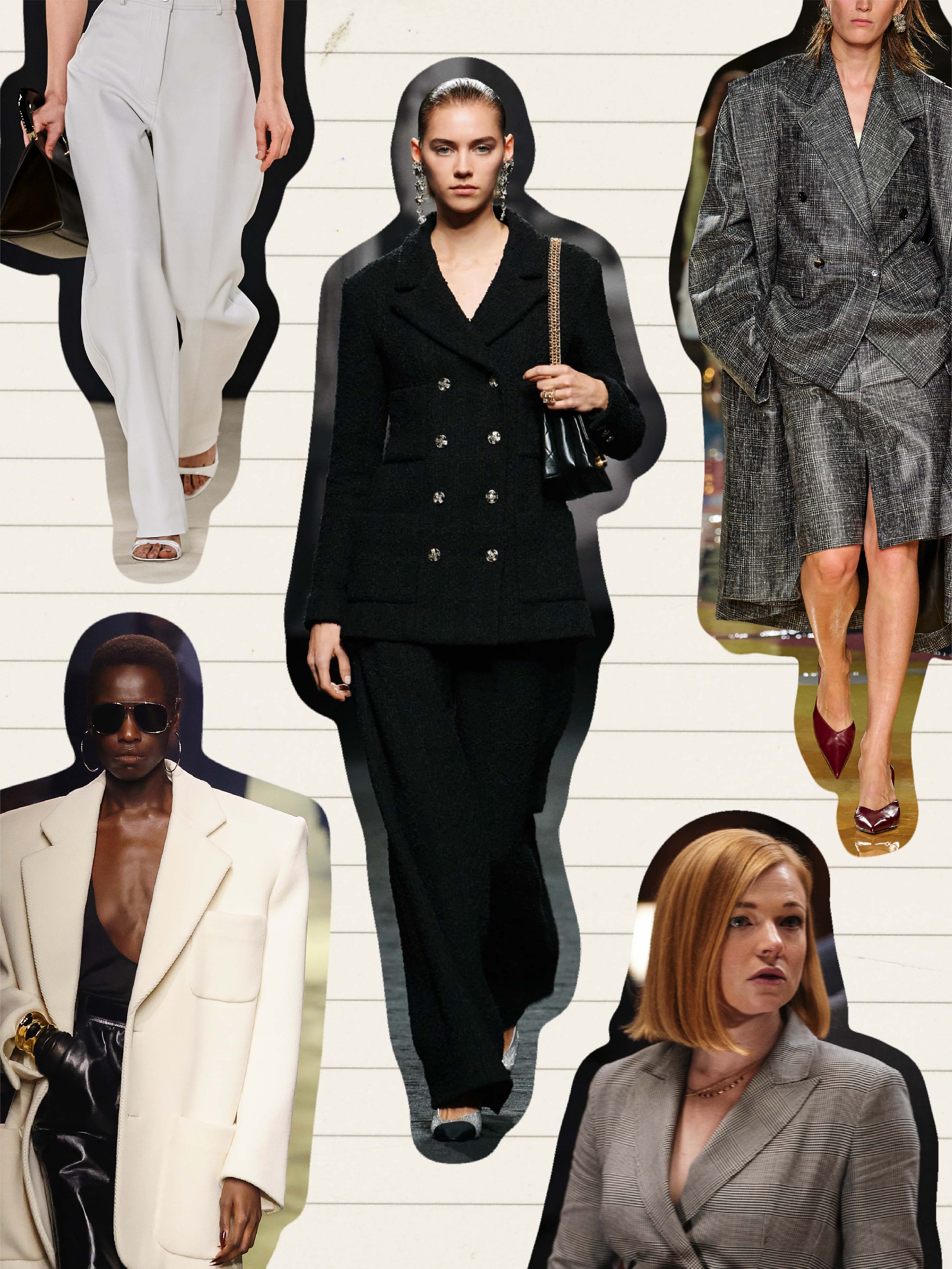
Photo:
Courtesy of Ferragamo; Courtesy of Chanel; Courtesy of Bottega Veneta; David Russell/HBO; Courtesy of Saint LaurentPut the laptop down, put the hanger back on the rail, and lay your head down. It's the same rule I have when I'm about to send an essay-long text to someone who has annoyed me to no end. After a good night's sleep, that text looks ridiculous, and the same might go for the coat you're planning to buy. If you wake up and can't stop thinking about it, that should signal you're making the right decision. Ultimately, the key to nailing that old money aesthetic isn't about spending all your money but making smart long-term investments.




